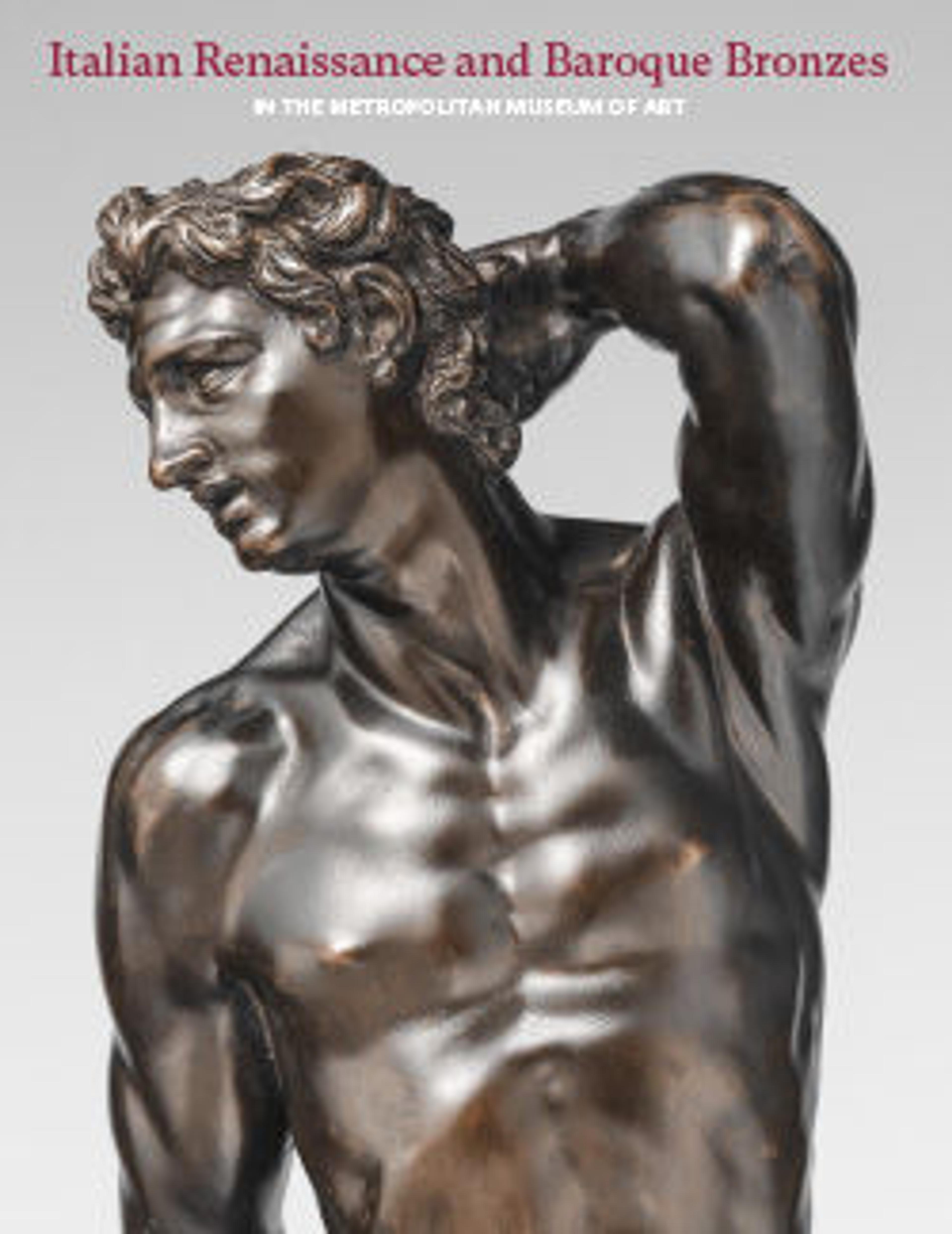Striding Pan
The satyr stands upright and majestically strides forward. His powerfully muscled torso closely resembles Riccio’s heroic nudes, like the beggar in the Saint Martin relief in this gallery. He is most probably Pan, the satyr deity who reigns over the material world. Designed to stand on a scholar’s desk, he carried the attributes of a flaming conch-shell lamp and an ink-filled vase, perhaps symbolizing Pan’s dominion over the elements. Such pairings of figure and function are rare in Riccio’s work, but the extraordinary balance of the topheavy figure on just two small hooves is typical of Riccio’s technical mastery.
Artwork Details
- Title: Striding Pan
- Artist: Andrea Briosco, called Riccio (Italian, Trent 1470–1532 Padua)
- Date: 1530–1539
- Culture: Italian, Padua
- Medium: Bronze
- Dimensions: Overall (confirmed): 14 1/8 × 6 1/4 × 4 3/4 in. (35.9 × 15.9 × 12.1 cm)
Base (confirmed): 7 in. × 6 3/4 in. × 7 in. (17.8 × 17.1 × 17.8 cm) - Classification: Sculpture-Bronze
- Credit Line: Purchase, Gifts of Irwin Untermyer, Ogden Mills and George Blumenthal, Bequest of Julia H. Manges and Frederick C. Hewitt Fund, by exchange; and Rogers and Pfeiffer Funds, 1982
- Object Number: 1982.45
- Curatorial Department: European Sculpture and Decorative Arts
More Artwork
Research Resources
The Met provides unparalleled resources for research and welcomes an international community of students and scholars. The Met's Open Access API is where creators and researchers can connect to the The Met collection. Open Access data and public domain images are available for unrestricted commercial and noncommercial use without permission or fee.
To request images under copyright and other restrictions, please use this Image Request form.
Feedback
We continue to research and examine historical and cultural context for objects in The Met collection. If you have comments or questions about this object record, please complete and submit this form. The Museum looks forward to receiving your comments.
